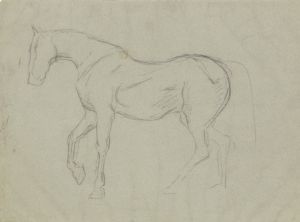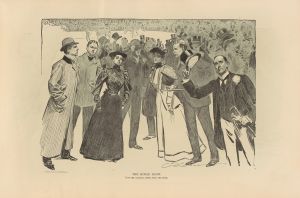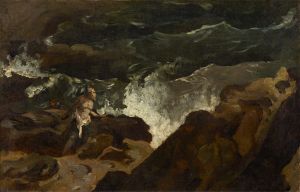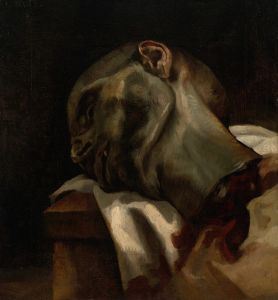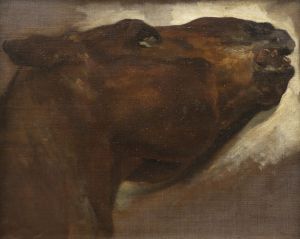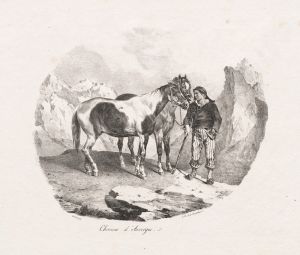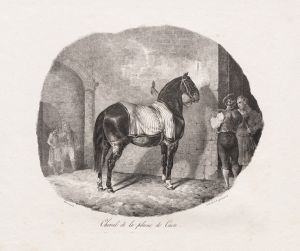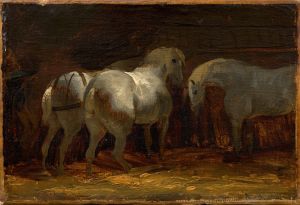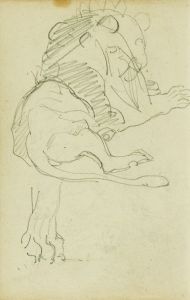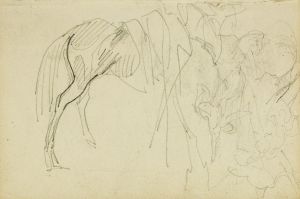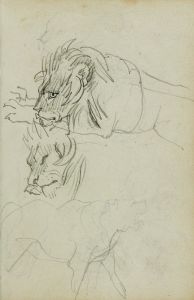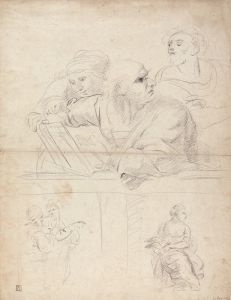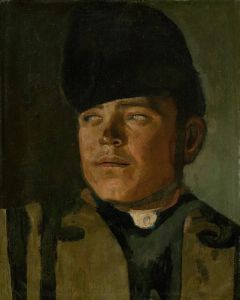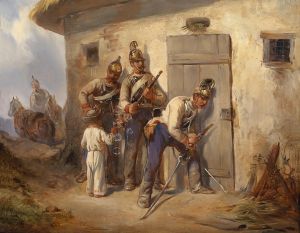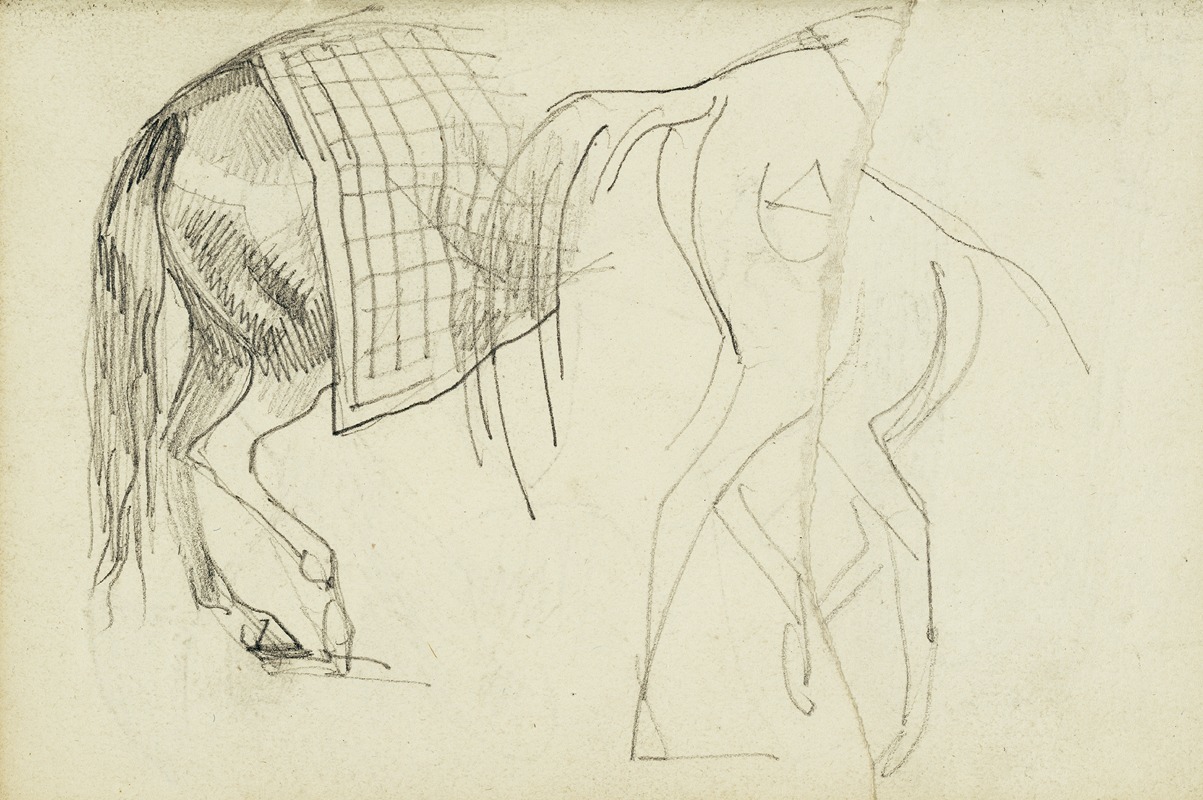
Horse Studies
A hand-painted replica of Théodore Géricault’s masterpiece Horse Studies, meticulously crafted by professional artists to capture the true essence of the original. Each piece is created with museum-quality canvas and rare mineral pigments, carefully painted by experienced artists with delicate brushstrokes and rich, layered colors to perfectly recreate the texture of the original artwork. Unlike machine-printed reproductions, this hand-painted version brings the painting to life, infused with the artist’s emotions and skill in every stroke. Whether for personal collection or home decoration, it instantly elevates the artistic atmosphere of any space.
Théodore Géricault, a prominent French Romantic painter, is well-known for his dynamic compositions and intense studies of movement and emotion. One of his notable works is "Horse Studies," a series of sketches and paintings that reflect his fascination with equine subjects. Géricault's interest in horses can be traced back to his early life and experiences, as he was an avid horseman himself. This personal connection to horses is evident in the meticulous attention to detail and the lifelike representation found in his equine studies.
"Horse Studies" by Géricault is not a single painting but rather a collection of works that include sketches, drawings, and paintings. These studies were created during the early 19th century, a period when Géricault was deeply engaged in exploring the themes of movement and anatomy. His approach to studying horses was scientific and methodical, as he sought to understand the musculature and dynamics of these animals. This dedication to realism and anatomical precision was a hallmark of Géricault's style and contributed to his reputation as a master of capturing movement.
Géricault's equine studies were not merely academic exercises; they also served as preparatory works for some of his larger compositions. One of the most famous paintings that benefited from these studies is "The Charging Chasseur," completed in 1812. This painting depicts an officer on horseback in the midst of battle, showcasing Géricault's ability to convey energy and motion. The detailed understanding of horse anatomy gained from his studies allowed Géricault to create a sense of realism and dynamism in his larger works.
The influence of Géricault's "Horse Studies" extends beyond his own paintings. His work had a significant impact on other artists of the Romantic period and beyond, inspiring them to explore similar themes of movement and emotion. Géricault's dedication to capturing the essence of horses in motion also contributed to the broader Romantic movement's emphasis on nature and the sublime.
In addition to their artistic value, Géricault's equine studies hold historical significance. During the 19th century, horses were an integral part of daily life, serving as transportation, labor, and symbols of power and prestige. By focusing on horses, Géricault was engaging with a subject that resonated with contemporary audiences and reflected the cultural and social dynamics of his time.
Géricault's "Horse Studies" continue to be appreciated for their technical skill and emotional depth. They offer insight into the artist's creative process and his commitment to capturing the vitality of his subjects. Today, these studies are housed in various collections and museums, where they are studied and admired by art historians and enthusiasts alike. Through these works, Géricault's legacy as a pioneer of the Romantic movement and a master of equine art endures.





